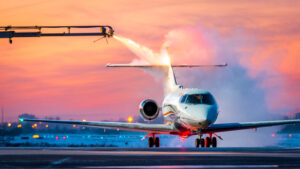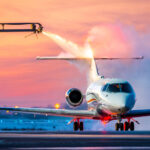Making Flights Smarter with Automation Airmanship
How can we make our flights smarter and more efficient? One way is through the use of automation airmanship. By automating some of the tasks associated with flying, pilots can focus on the aspects of flying that require their human expertise and judgment. When used correctly, automation can improve safety and efficiency while reducing workload and fatigue. However, it is important to remember that automation is only as good as the information it is given, so pilots must be vigilant in monitoring automated systems and maintaining a high level of situational awareness. Join us as we explore how automation can be used to improve airmanship!
There are four main areas where automation can be used to improve business aviation air travel.
The use of automation in business aviation air travel has become increasingly popular in recent years, offering numerous benefits for operators and passengers alike. Automation can be used to reduce crew fatigue, improve safety during challenging conditions and route automation, as well as decreasing pilot workload in highly demanding situations or aircraft systems management. It is also an efficient form of automation airmanship, enabling the aircrew to focus on the core tasks at hand while automation handles the larger operational needs. With ongoing advancements in automation technology, operators have greater control over their operations with less stress placed on their aviation personnel.
How automation can help to make flights smarter and more efficient
Automation airmanship is a rapidly evolving field that has the potential to revolutionize the way airlines operate. With automation, pilots can take advantage of smart flight automation systems for improved efficiency and performance on flights: from route optimization to robust tracking solutions, automation can help to make flying smoother and more intuitive than ever before. Automation also allows pilots to better access and manage data related to flight plans, destinations, weather conditions and other factors that may affect efficiency. Automation airmanship reduces tedious manual process while granting pilots greater surface-level oversight during each stage of the journey so they can properly monitor aircrafts operation while focusing on decision making instead. The possibilities are endless when it comes to harnessing automation airmanship in order to create smarter and more efficient flights!
The benefits of automating airmanship, including reducing pilot workload and increasing safety
Automating airmanship offers numerous advantages to pilots, including reducing pilot workload and increasing their safety. The automation in modern aircraft—known as the ‘glass cockpit’—is a prime example of automation airmanship whereby a majority of the tasks that would previously have been done by pilots are now performed by automation, drastically reducing pilot workload. Not only this but automation helps improve safety in the skies by assisting with critical tasks such as alerting crews to an upcoming obstacle or maneuver, or quick calculations for flight planning. To ensure automation aids, rather than hinders, operations it’s important to couple automation with a well-guided human pilot as during times of turbulence and distress it’s often necessary for real-time reactions and decisions which only a pilot can provide. Ultimately automation airmanship serves to aid aviation in its pursuit of greater heights when implemented correctly and with due diligence.
The challenges of implementing automation, such as training pilots to use new systems
Implementing automation within the aviation industry is no small feat and requires its pilots to adapt quickly in order to master the new systems. This challenge of pilots learning how to use automated systems can be met by comprehensive training, online simulations, and advanced ground-based tutorials. Yet, training can be a lengthy process and pilots need to remain vigilant during times of transition in order to avoid serious incidents resulting from human error usually caused when pilots are unfamiliar with new automated technologies. Improper pilot training has been a contributing factor in some of the largest aviation accidents throughout history, but thorough preparation of pilots will give them a necessary level of comfort with these tools and significantly reduce the risk of instability due to human error.
A call to action for the business aviation industry to embrace automation airmanship
The business aviation industry must rise to the challenge of automation airmanship. Increased training of pilots in both glass cockpit systems and automation procedures is essential for pilots to become proficient at safely integrating these systems into their own flying styles. Accidents and incidents are already pointing to the critical role that pilots must play in learning automated practices, as pilots who have not been adequately trained can experience a lack of situational awareness when the aircraft’s computers take over some or all of their roles. If business aviation is to reach its fullest potential, pilots will need to embrace automation and be thoroughly trained so they are prepared for every situation they may face while en route. Now is the time for business aviation pilots to develop an understanding and proficiency with new automation airmanship technologies and procedures before accidents yet again highlight this urgent need.
RELATED CTS TRAINING









